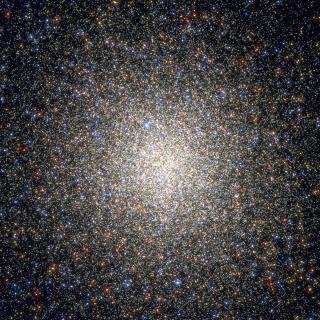Bibcode
Milone, A. P.; Piotto, G.; Renzini, A.; Marino, A. F.; Bedin, L. R.; Vesperini, E.; D'Antona, F.; Nardiello, D.; Anderson, J.; King, I. R.; Yong, D.; Bellini, A.; Aparicio, A.; Barbuy, B.; Brown, T. M.; Cassisi, S.; Ortolani, S.; Salaris, M.; Sarajedini, A.; van der Marel, R. P.
Referencia bibliográfica
Monthly Notices of the Royal Astronomical Society, Volume 464, Issue 3, p.3636-3656
Fecha de publicación:
1
2017
Número de citas
441
Número de citas referidas
400
Descripción
We use high-precision photometry of red-giant-branch (RGB) stars in 57
Galactic globular clusters (GCs), mostly from the `Hubble Space
Telescope (HST) UV Legacy Survey of Galactic GCs', to identify and
characterize their multiple stellar populations. For each cluster the
pseudo-two-colour diagram (or `chromosome map') is presented, built with
a suitable combination of stellar magnitudes in the F275W, F336W, F438W,
and F814W filters that maximizes the separation between multiple
populations. In the chromosome map of most GCs (type-I clusters), stars
separate in two distinct groups that we identify with the first (1G) and
the second generation (2G). This identification is further supported by
noticing that 1G stars have primordial (oxygen-rich, sodium-poor)
chemical composition, whereas 2G stars are enhanced in sodium and
depleted in oxygen. This 1G-2G separation is not possible for a few GCs
where the two sequences have apparently merged into an extended,
continuous sequence. In some GCs (type-II clusters) the 1G and/or the 2G
sequences appear to be split, hence displaying more complex chromosome
maps. These clusters exhibit multiple subgiant branches (SGBs) also in
purely optical colour-magnitude diagrams, with the fainter SGB joining
into a red RGB which is populated by stars with enhanced heavy-element
abundance. We measure the RGB width by using appropriate colours and
pseudo-colours. When the metallicity dependence is removed, the RGB
width correlates with the cluster mass. The fraction of 1G stars ranges
from ˜8 per cent to ˜67 per cent and anticorrelates with the
cluster mass, indicating that incidence and complexity of the multiple
population phenomenon both increase with cluster mass.
Proyectos relacionados

Vía Láctea y galaxias cercanas
El objetivo general del Proyecto es el estudio de la estructura, historia evolutiva y proceso de formación de galaxias a través de sus poblaciones estelares resueltas, tanto a partir de fotometría como espectroscopia. El proyecto puede dividirse en cuatro líneas principales: I. Historia de formación estelar en el Grupo Local. El objetivo de esta
Martín
López Corredoira